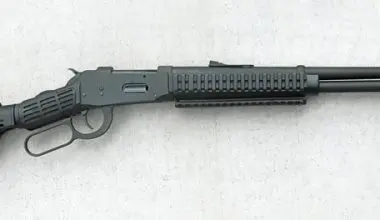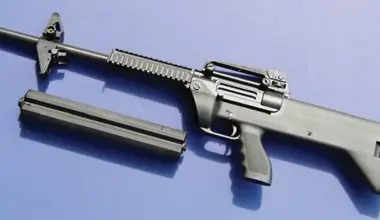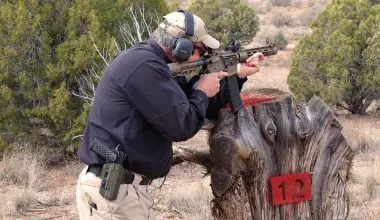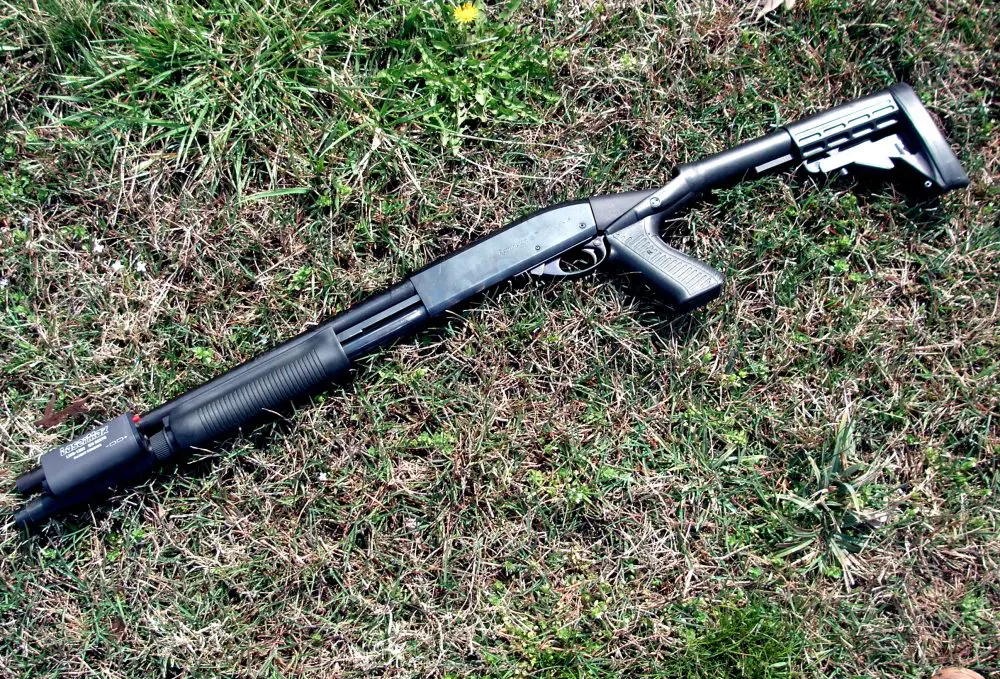
[Article from S.W.A.T. Magazine March 2012]
Fighting shotguns have been, and for the most part still are, modifications of sporting shotguns. Sure, doodads, cool stocks, rails, pistol grips and any other number of miscellaneous gadgets have been invented to hang onto and dress up shotguns to make them better tools for fighting with, but still, they are just dressed-up bird guns.
I am not saying that shotguns are not good tools to fight with. Quite the contrary— shotguns are magnificent social work tools.
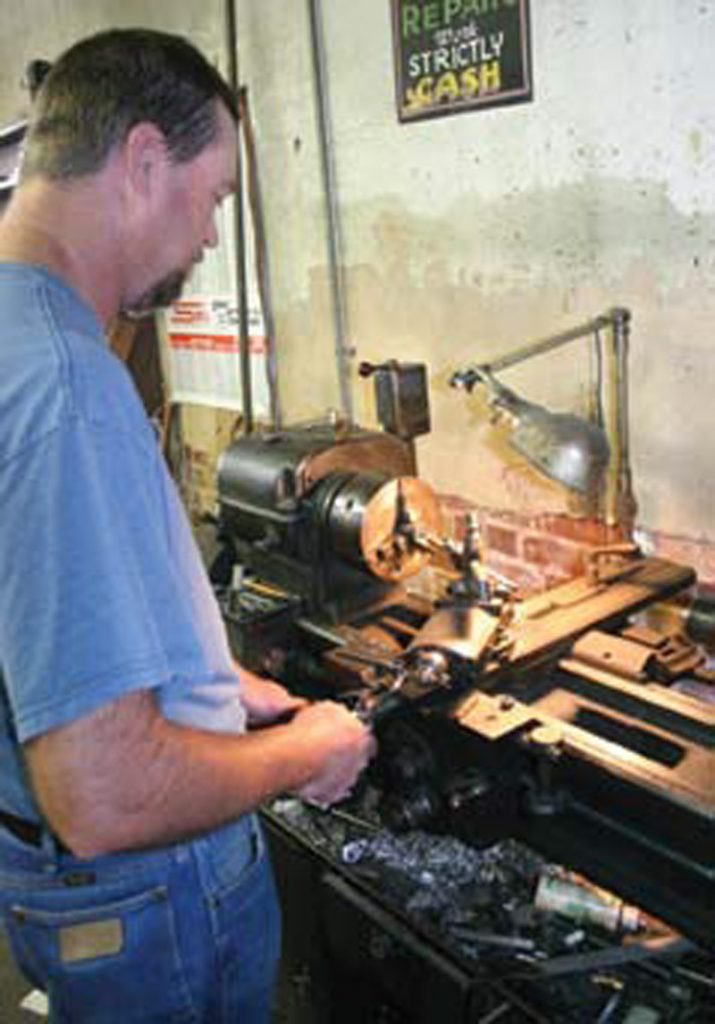
Table of Contents
SAIGA 12
The Russians reverse engineered the venerable AK-47 into a practical, boxmagazine- fed weapon that works great and is affordable for the average Joe. The result is the Saiga 12. Saiga makes shotguns in gauges other than 12 gauge, but the Saiga 12 is the big boy. A cult following has emerged and the Saiga 12’s popularity is skyrocketing, going for around $500 retail.
One glaring difference about the Saiga as compared to its AK-47 cousin is that the stock is a sporting type and does not have a pistol grip. Also, the trigger assembly is set farther to the rear than the AK’s, which sits next to the magazine well, not allowing “bolt on” capability of AK parts.
Work needs to be done to a new Saiga 12 to make it a bit more ergonomic and easy to operate. Gunsmiths can take a Saiga and, for a hefty price, relocate the trigger parts and trigger guard up forward as on the AK and convert it to put standard AK furniture on it.

This is a great option if you have deep pockets or have set aside the money for such an undertaking. However, many people who have a Saiga can’t afford to have the trigger work done and have to make do with the Saiga 12 as is.
Well, I’m here to testify that with a little ingenuity and a little help, I was able to modify my Saiga 12 into a formidable fighting package, and so can you. Here’s how I did it.
Out of the box, the Saiga 12 is still not too bad. It has a 24-inch barrel that is externally threaded for chokes and comes with a five-round box magazine that has been blocked to two rounds for hunting migratory game birds. That block can be easily removed.

TESTING
I did some testing on the Saiga 12 as it came out of the box and then after I had modified it to make it a little more user friendly. The Saiga 12 is set up for use with buckshot and slugs. I can only guess that the Russians market it as a game gun to get around political correctness issues here in the States. The gas piston cap has two positions on it, but I found that birdshot of any brand would not allow the gun to function reliably.
Deputy Sheriff Kevin Herbert, from El Dorado, Texas, helped me with the Saiga 12 testing. Perhaps due to his having “seen the elephant” at a young age, Kevin is the most serious-minded law enforcement officer I have ever known when it comes to the tools of his trade and his duties as a Deputy Sheriff. He is the firearms proficiency control officer at his department and was the perfect person to participate in this test.


Since the gun is primarily designed as a fighting tool for use with buckshot and slugs, we patterned it using Winchester Supreme 00 buckshot with 9 pellets, and Hornady TAP Personal Defense Magnum, 9 pellet 00 buck, which is the loading that was designed for semi-auto guns. The low recoil stuff would not work the action unless the gas was cranked up.
The patterning test was a real eyeopener. With the 24-inch tube, each brand of buckshot was tested at 5-, 7-, 10- and 15-yard increments. The two brands were neck and neck out to seven yards and then things started changing dramatically.
The Hornady TAP kept grouping very tightly, while the Winchester fodder started spreading out. That is not to say that the Winchester is useless, as the patterns were still combat effective, it’s just that the Hornady TAP grouped really well and won the patterning test overwhelmingly.

CONVERTING GOOD TO BETTER
Many companies offer functional furniture for the Saiga 12. TAPCO manufactures direct bolt-on stocks and forearms for the Saiga shotguns, thus forgoing the expensive gunsmithing work previously mentioned. I acquired a TAPCO stock, forearm, and vertical grip along with their sling set. Installation was a snap.
There are aftermarket gas plugs out there that allow the Saiga to function with birdshot. The one we obtained for testing was made by MD Arms. The MD product has five positions, thus allowing the shooter a wide range of gas settings so it will really kick out the birdshot loads.
Chaosus, owned by Cameron Hadley, manufactures a very cool muzzle brake for the Saiga 12. Called the Warthog Door Breaker Brake, the front of the brake has sharp teeth that are used as a stand-off to allow gases to escape if the operator is shooting off door locks and hinges.
The Warthog is threaded to fit the Saiga 12’s factory threads, but I had decided to cut the barrel to the legal minimum of 18 inches. So it was off to Abilene, Texas, to Longacre’s Inc., which is owned by master gunsmith Kevin Meier. In our area, Kevin is the go-to guy for stuff like this. A graduate of Murray State College of Gunsmithing Technology, in Tishomingo, Oklahoma, Kevin is qualified to perform any sort of gunsmithing chore. I told him what I wanted to do to the Saiga 12, and he jumped in with both feet.
First came the cutting, truing and crowning of the barrel. Kevin had to make from scratch a centering mandrel on the lathe in order to crown the barrel properly. Then the installation of the Warthog had to be done. Since Kevin had cut off the barrel, we had to find a way to affix the Warthog to the barrel because the threads were now gone. The barrel could be threaded, or the Warthog could be silver soldered on after the internal threads on the Warthog had been removed. I chose the latter method.
The Warthog was chucked into the lathe and Kevin carefully went about turning out the internal threads of the Chaosus Warthog brake. Being the careful craftsman that Kevin is, the dimensions were perfect, with just enough room for the silver solder tape to go between the brake and the barrel.
Kevin and his trusty sidekick Glendal Williams went to work soldering the Warthog to the barrel of the Saiga. Kevin wielded the torch while Glendal kept the gun turning so as to distribute the heat evenly. When the barrel and brake glowed cherry red, the silver solder flowed perfectly into place.
BACK TO THE RANGE
The next day, Kevin Herbert and I went to the range to do patterning tests. The Warthog made a world of difference on the Winchester fodder. The groups were much tighter, and the only thing I can attribute that to is the installation of the Warthog muzzle brake. And the Hornady TAP patterns were even tighter than before. We extended the range to 25 yards with great effect. That muzzle brake was sure worth it.
There were no malfunctions at all with ammo that was powerful enough to work the action. I have since presented a class about fighting shotguns to some of my peers in the law enforcement community, and the Saiga 12 raised eyebrows and sparked interest in the Saiga platform as an addition to their department inventories.
MAGAZINES
I went in search of extra magazines for the Saiga 12 and was pleasantly surprised to find an online company called KeepShooting.com. KeepShooting manufactures five-round magazines for a mere $11.99 apiece. The folks at KeepShooting advised me that their mags were designed for the original Saigas that came into the country and that the mag latch dimensions are different. KeepShooting’s website has instructions on how to modify the mags with a Dremel tool, and the job was done. It was minimal fuss, even for a guy like me who is mechanically challenged.
The shopping list for cool Saiga 12 stuff is not complete without the coolest of all accessories—a drum magazine. I contacted three different manufacturers of Saiga 12 drums. Two of them did not return my phone calls, but the third was a breath of fresh air!
Alliance Armament out of Boonville, Indiana is a full manufacturing facility dealing in tactical and NFA weapons. Customer service is everything to Alliance Armament, and they are experts on Saiga shotguns and conversions of them. They also manufacture accessories, including a couple of highly precision-made 20 and 30-round drums. Alliance shipped a 30- round drum to me overnight.
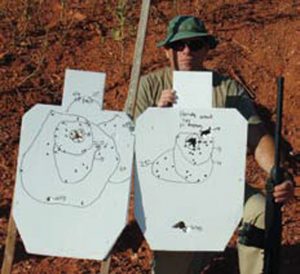
The drums are CNC machined out of 6061 aircraft-grade aluminum, and then hard anodized for extreme durability. As these drums are precision tools, tolerances are tight and quality control is high. They will only handle 2 3/4” shells and some foreign-manufactured or poorquality ammo may not feed well. With the high-quality ammo we used, there were no problems.
The Alliance Saiga 12 drums are a bit pricey at $379 for the 20 rounder and $425 for the 30 rounder, but with this type of product, you truly get what you pay for, and this is one of the highestquality magazines of any type that I have seen. Special Ops Teams and even competitive shooters love these magazines. I look for these things to take off and sell like hotcakes, especially with rumors that BATFE is possibly going to ban them.
My pal Ashley Burnsed at Blue Force Gear makes a chest-type magazine pouch called the Ten Speed SCAR-H Chest Rig, which is designed for any of the popular .308 mags such as the M14, FN, etc. These pouches are made from a very durable elastictype material and will expand. The .308 version will easily fit the Saiga 12 mags, making it the perfect accessory to haul five extra mags in. It’s a handy and tough piece of kit. There is also storage in the back behind the pouches for maps or other gear.
Well, there you have it. The average Joe can take his Saiga 12 shotgun and turn it into one really cool-guy platform that is both formidable and functional, and can do it for less than the cost of some highend custom shotguns.
The total price tag for the Saiga 12, parts and gunsmithing added up to just over $900.
